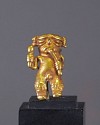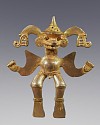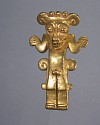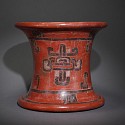



Costa Rica, Chiriqui Cast Gold Miniature Flute Player
This miniature gold shaman is seen playing a flute and holding a rattle in the left hand. Music was known to facilitate trance states and psychological healing during psychedelic shamanic rituals. A similar piece is illustrated in THE ART OF PRECOLUMBIAN GOLD - THE JAN MITCHELL COLLECTION on page 101. From the collection of Karin Ashburn by descent from her father Benno Mattel of Uruguay.
Period: Costa Rica, c. AD 1000 - 1500
Media: Metal
Dimensions: Height: 1 1/16" ( 2.7cm) Weight: 4.9grams., 15 kt
$1,900
n4027
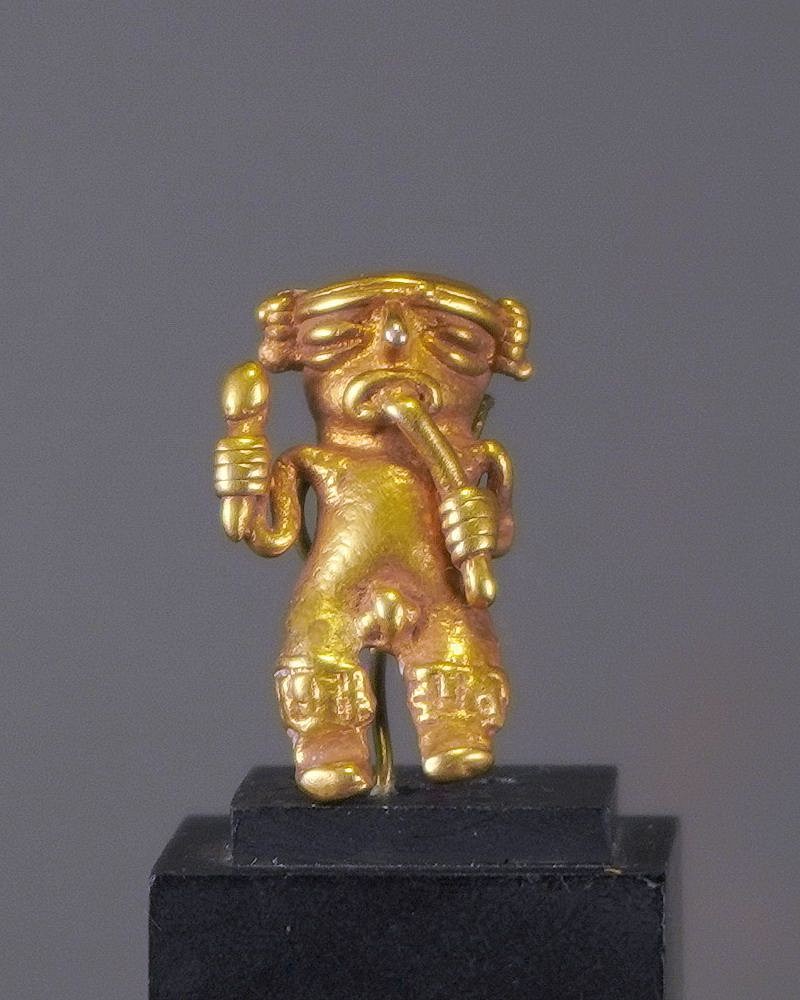




Costa Rica, Chiriqui Cast Gold Miniature Flute Player
This miniature gold shaman is seen playing a flute and holding a rattle in the left hand. Music was known to facilitate trance states and psychological healing during psychedelic shamanic rituals. A similar piece is illustrated in THE ART OF PRECOLUMBIAN GOLD - THE JAN MITCHELL COLLECTION on page 101. From the collection of Karin Ashburn by descent from her father Benno Mattel of Uruguay.
Period: Costa Rica, c. AD 1000 - 1500
Media: Metal
Dimensions: Height: 1 1/16" ( 2.7cm) Weight: 4.9grams
$1,900
n4027C



Costa Rica, Costa Rican Gold Shaman Holding a Bell
Shamans often use music to assist in inducing a trance. In this case he uses a bell. Lost-wax cast, with a suspension loop at the back. A similar example is illustrated in The Gold of Ancient America, by Alan Wardwell, figure 92, page 111. From the Jan Mitchell collection, acquired prior to 1970, by descent to his sons.
Period: Costa Rica, Diquis Delta, Period V-VI, c. AD 1000 - 1500
Media: Metal
Dimensions: Height: 2" x Weight: 14.2 grams.
$3,000
p1255
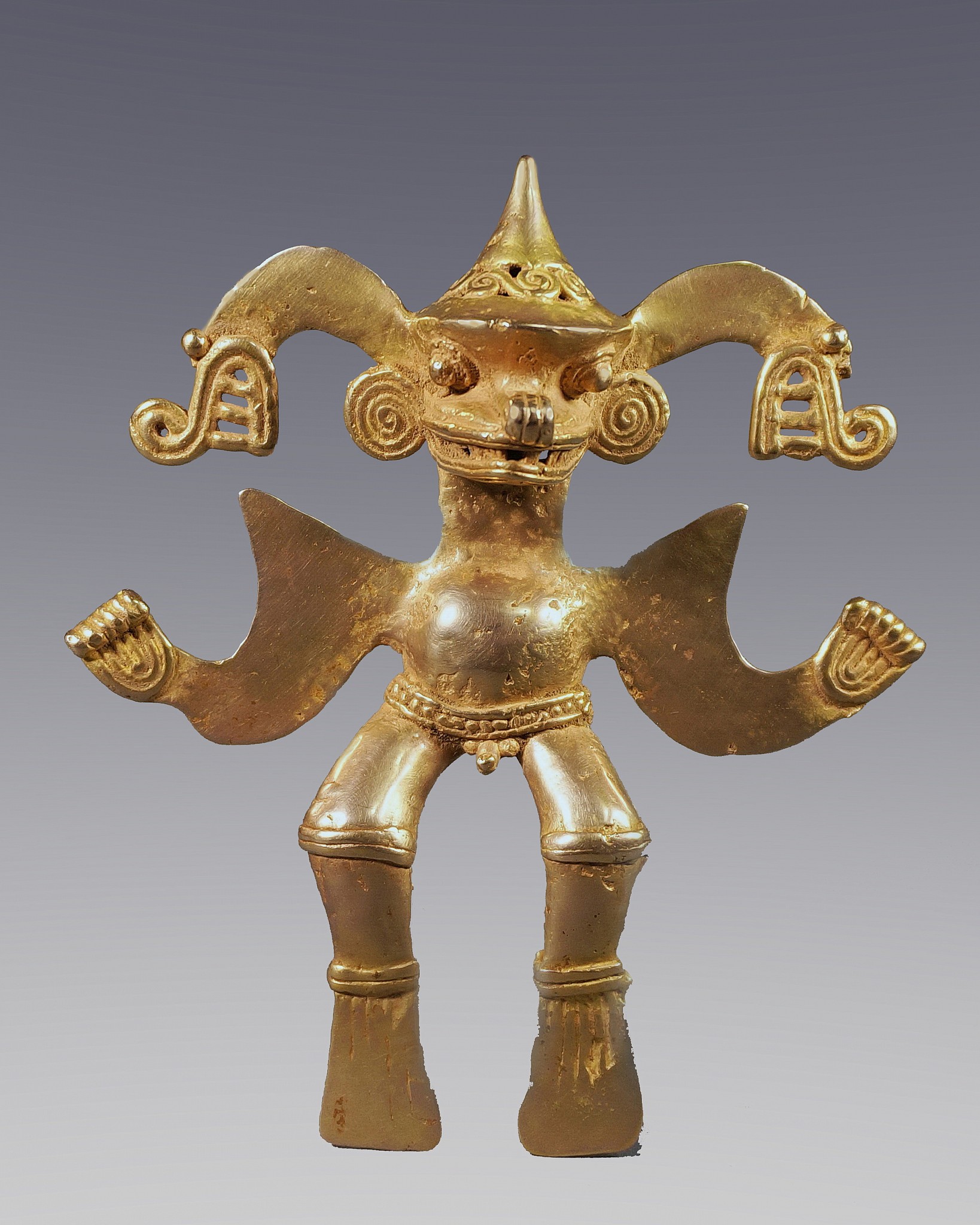


Costa Rica, Diquis Cast Gold Anthropomorphic Figure with a Cone Shaped Crown
The figure has a crocodilian nose and mouth with serpents emanating from his head and wears a cone-shaped crown. His hands are held outward with broad shoulders which could also be wings, and his flipper-shaped feet are typical of the Diquis region which borders Panama. Crocodiles, or Saurians are not often depicted as standalone figures. A very similar shaped figure, but smaller and without the helmet is illustrated in THE ART OF PRECOLUMBIAN GOLD - The Jan Mitchell Collection, #6. Another similar figure is in the Janssen Collection in Antwerp. Both have a male phallus.
Period: Panama, Disquis, c. AD 1200 - 1500
Media: Metal
Dimensions: Height: 4 3/16" x Width:3 3/4",Weight: 99.6 grams
XRF Au. 72%, Cu. 24%, Ag. 2.4%
Price Upon Request
n7031










Costa Rica, Diquis Style Cast Gold Figure of a Shaman Wearing an Crocodile Mask
This is a hollow lost wax cast figure that has a relatively thick wall. It has two casting chaplets on the back that can be seen clearly. The pointed upturned nose and sharp teeth are qualities of a crocodile. A crocodile from the Diquis area is illustrated in THE GOLD OF ANCIENT AMERICA, P.114. Ellen Howe wrote about this piece in A RADIOGTRAPHIC STUDY OF HOLLOW CAST GOLD PENDANTS FROM SITIO CONTE in the 45th Congress of Americanists, Bogota 1985, pg. 190-200, where she C-14 tested the carbon core and took radiographs. Ex. New York collector, prior to 1970.
Period: Panama, Diquis, c. AD 1200 - 1500
Media: Metal
Dimensions: Height: 3" x Width: 2.85" Weight: 63 grams
XRF: Au. 89.7%, Ag. 9.9% , Cu. .02%
Price Upon Request
N7059
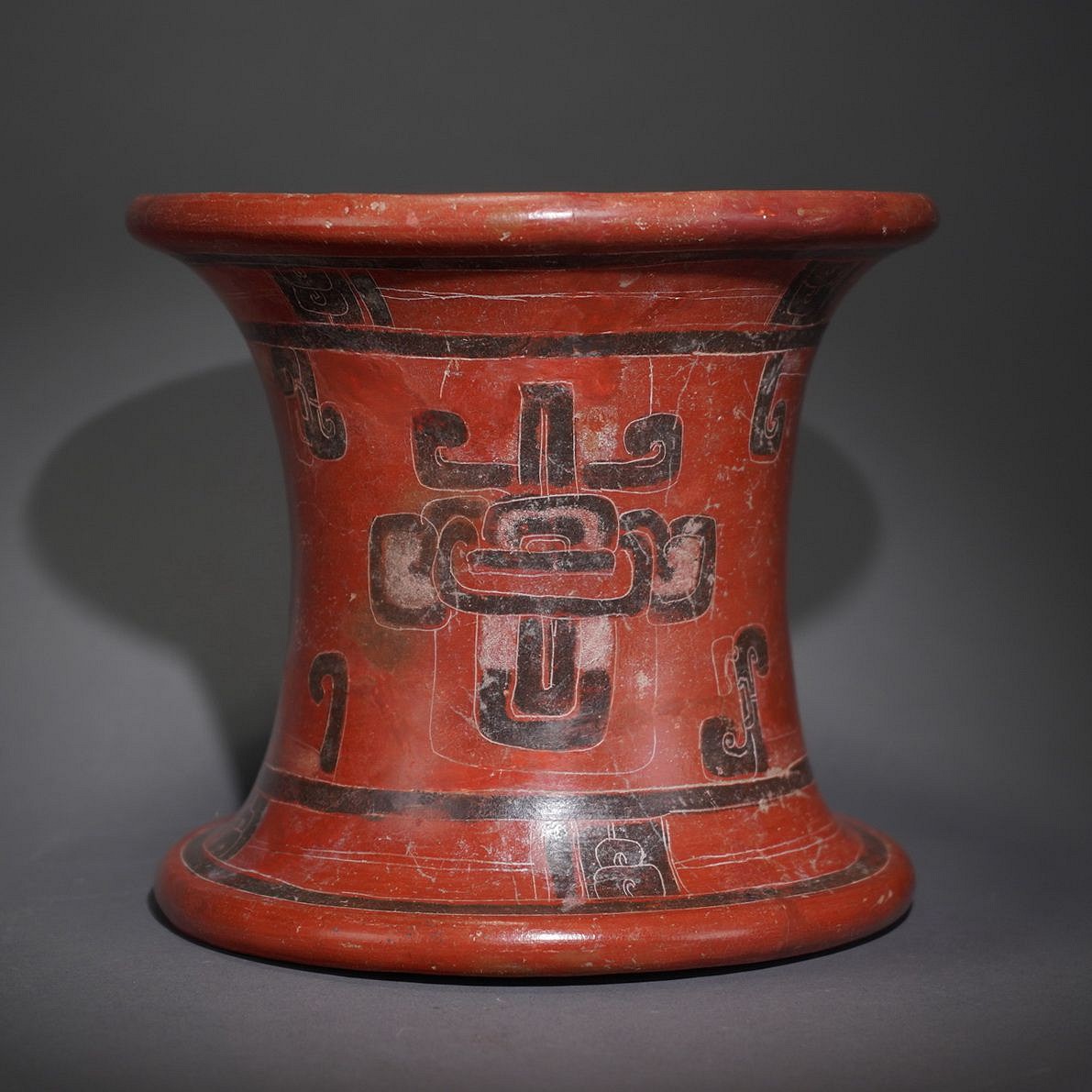
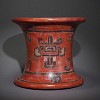
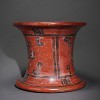
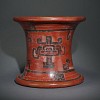
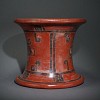
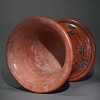
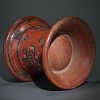
Costa Rica, Rosales Ceramic Pedestal Engraved with Glyph Designs
This pedestal is decorated with incised glyphs outlined in black on red ground in three registers. The Rosales artists' ceramics were highly prized and were traded throughout the Nacoya peninsula.
Period: Costa Rica, Nicoya, Guanacaste, c. 300 BC - AD 500
Media: Ceramic
Dimensions: Diameter 7 1/4" Height 6 1/2"
$4,450
94114
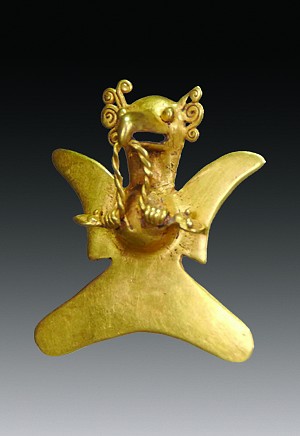





Costa Rica, Veraguas Cast Gold Eagle Pendant With Intertwining Serpents
This lost-wax cast gold miniature eagle is adorned with finely crafted scrolls around its head. In its claws, the eagle grasps a pair of intertwined serpents. There is a suspension loop behind the eagle’s neck, indicating that it was used as a pendant. This eagle is illustrated in The Met Musuem's THE ART OF PRECOLUMBIAN GOLD: The Jan Mitchell Collection, pg.110. Estate of Jan Mitchell prior to 1970.
Period: Panama, Veraguas, c. AD 1000 - 1500
Media: Metal
Dimensions: Height:1 3/4" x Width:1 1/2" Weight: 13.2 grams
$12,750
p1020

